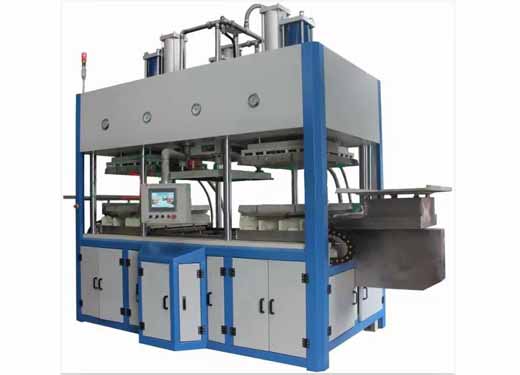What is Pulp Molding Tableware Machine
A pulp molding tableware machine is a type of machinery used in the production of tableware, such as plates, bowls, and cups, made from pulp materials like paper, cardboard, and other natural fibers. The machine uses a mold to shape the pulp material into the desired shape and size, and then dries and compresses the pulp to make it strong and durable.
Overview of the Tableware Industry
Tableware is an essential part of everyday life, used in homes, restaurants, and other food service establishments. The industry has seen significant growth over the years due to the increasing demand for disposable and eco-friendly products. Traditional tableware made of plastic, glass, and ceramics have become less popular due to environmental concerns, which has led to a surge in the production of eco-friendly tableware made from biodegradable materials like paper pulp.
Why Choose Pulp Molding Tableware Machines
Pulp molding tableware machines are essential in the production of eco-friendly tableware. These machines offer several benefits, including cost-effectiveness, eco-friendliness, and durability. Using pulp molding tableware machines can help reduce the environmental impact of traditional tableware manufacturing processes by using natural and renewable resources. Additionally, these machines can produce large quantities of tableware quickly and efficiently, making them ideal for businesses looking to scale up their operations.
Benefits of Pulp Molding Tableware Machines:
A pulp molding tableware machine is an efficient and eco-friendly way to produce a variety of tableware products such as plates, bowls, and cups. Here are some benefits of using pulp molding tableware machines:
- Sustainable and eco-friendly: Pulp molding tableware machines use biodegradable materials like paper pulp or sugarcane pulp to make the final products. These materials are eco-friendly and do not harm the environment. Additionally, pulp molding tableware products are recyclable and can be used as compost after disposal.
- Versatile: Pulp molding tableware machines can produce a wide range of products, including plates, bowls, cups, trays, and more. They are versatile and can be customized according to the needs of the customer.
- Cost-effective: Pulp molding tableware machines are cost-effective compared to other tableware production machines. They require minimal investment, and the production process is quick and efficient.
- Customizable: Pulp molding tableware machines can produce tableware products in different shapes, sizes, and colors. The machines are highly customizable and can produce tableware products according to the specific needs of the customer.
Types of Pulp Molding Tableware Machines
Pulp molding tableware machines come in different types, depending on the level of automation and production capacity. The three main types of pulp molding tableware machines are manual, semi-automatic, and fully automatic machines.
Manual machines Manual pulp molding machines require human intervention to operate each stage of the production process. The pulp preparation, molding, and drying stages are all done manually, and the operator needs to move the molds and products from one station to another. These machines are suitable for small-scale production and low investment budgets.
Semi-automatic machines Semi-automatic pulp molding machines have some level of automation, but still require some human intervention. They typically have an automated molding system and a manual pulp preparation and drying system. These machines are ideal for medium-scale production and require a moderate investment budget.
Fully automatic machines Fully automatic pulp molding machines have a high level of automation and can operate without human intervention. They typically have automated pulp preparation, molding, and drying systems, and can produce large quantities of products in a short amount of time. These machines are ideal for large-scale production and require a higher investment budget.
The type of machine chosen will depend on the specific needs of the manufacturer, including production capacity, budget, and level of automation desired.
Components of Pulp Molding Tableware Machines
Pulp molding tableware machines consist of several components that work together to produce high-quality tableware products. The following are the main components of a typical pulp molding tableware machine:
- Pulping system: This is the first stage of the production process. The pulping system is responsible for turning raw materials into a pulp mixture that can be molded into the desired shape. The pulping system typically consists of a hydraulic pulper, a high-density cleaner, a pulp pump, and a pulp tank.
- Molding system: The molding system is where the pulp mixture is shaped into the desired form of the tableware product. The molding system typically consists of a molding machine, a mold, and a vacuum pump.
- Drying system: The drying system is where the molded tableware products are dried to remove excess moisture. The drying system typically consists of a hot air drying oven, a conveyor belt, and a hot air blower.
- Hot press system: The hot press system is the final stage of the production process. This is where the dried tableware products are pressed to improve their strength and durability. The hot press system typically consists of a hot press machine and a mold.
Each of these components plays a crucial role in the production process of pulp molding tableware machines. Understanding how each component works can help operators maintain and troubleshoot their machines effectively.
